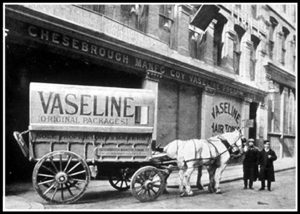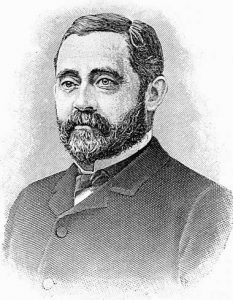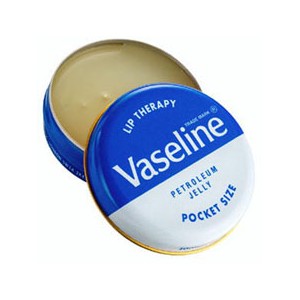Go west young man

Seeing what other couldn’t see, risking your life savings and self-inflicting cuts and burns – have you got what it takes to be an innovator?
Robert Chesebrough had.
 Robert Chesebrough was British chemist who worked distilling the oil form sperm whales into lighting fuel, but recognised that time was running out for whale oil and the future lay in petroleum.
Robert Chesebrough was British chemist who worked distilling the oil form sperm whales into lighting fuel, but recognised that time was running out for whale oil and the future lay in petroleum.
So he used his life savings and like other young men in the mid-19th century he ‘went west’, buying a ticket to the USA where he ended up in Titusville, Pennsylvania.
One day while touring one of the oil fields there, he noticed a rigger scraping a thick, dark goo from an oil pump’s joint. He asked what it was.
At first, it sounded like just an unwanted and potentially hazardous by-product. The wax-like gunk tended to come up with the crude oil and would collect on the rigging; if it wasn’t cleaned off regularly, it would gum up the works. The riggers called it “rod wax”.
However the riggers weren’t finished yet they went onto tell Robert that many of them used it on cuts and burns because it helped them heal quicker.
Robert was intrigued and he saw what might be a big opportunity. Rod wax was an un-valued by-product, something that was thrown away, if he could turn into something with real value then the potential margin was going to large.
He easily persuaded the riggers to let him have some of the wax and took it away to start experimenting on it.
It would take him several years but in the end, he discovered that by distilling the lighter, thinner oil products from the rod wax, he could create a light-colored gel. His later patented process involved vacuum distillation of the crude material followed by filtration of the still residue through bone char.
Now all he had to do was persuade people that it was worth having.

He started travelling around New York selling his Vaseline, a name that combined the German word for water and the Greek word for oil.
While being odourless and colourless meant it had obvious benefits over alternatives like lard, goose grease, olive oil and garlic oil, which were often rank and smelly, he needed to show that it actually worked.
So as part of his sales pitch he started using himself as a guinea pig, cutting himself or burning his skin with acid or an open flame, then spreading the ointment on his injuries and showing his past injuries healed, he claimed, by his miracle salve.
People were convinced and started to buy the product. Soon pharmacists were asking to stock it and in 1870, Robert opened his first factory.
While it is still used for cuts and burns it is also regularly used on dry and unruly hair, new uses which even Robert might not have thought of have emerged. It is used on the feet of vending machines to keep pests out and some farmers put it on chickens to prevent frostbite.